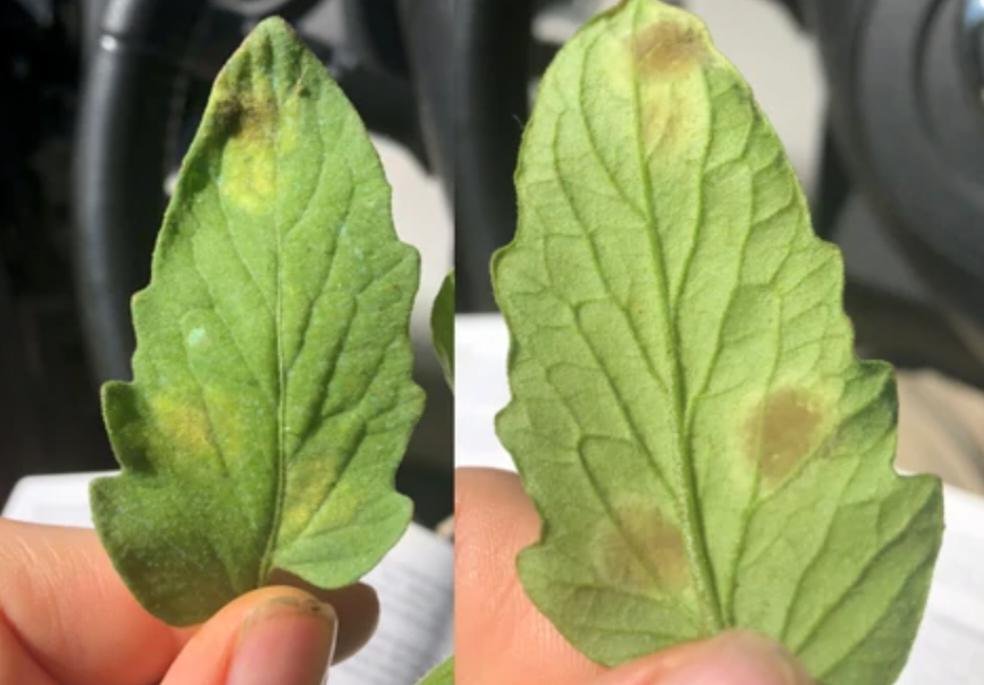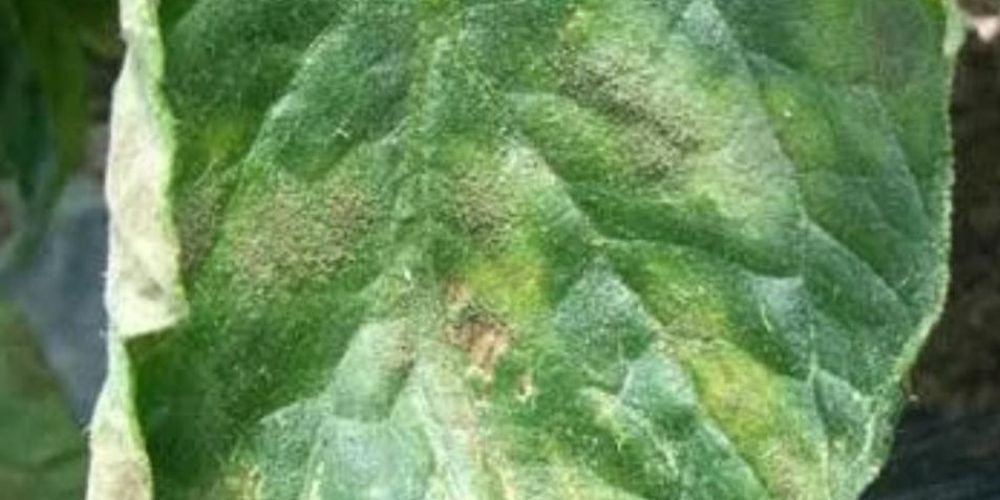Table of contents of the article
ToggleTomato leaf rot is a disease that greatly affects crop productivity. In this article on your site WORLD OF PLANTS, we discuss how to deal with this fungal disease effectively.
What is tomato leaf mold disease?
Tomato leaf rot is a fungal disease that affects tomato plants in humid environments. It grows and reproduces in moisture, attaching to tomato leaves. Once it appears on one plant, it quickly spreads to the rest of the crop, causing major losses. It is one of the most common diseases that affect tomatoes grown in greenhouses.
Cause of tomato leaf rot disease
Tomato leaf rot disease is caused by the fungus Passalora fulva (formerly known as Fulvia fulva or Cladosporium fulvum). The tomato plant is the primary host for this fungus. It can live without an above-ground host for up to a year, and when it lands on tomato leaves it enters... Its tissues through gas exchange pores, causing them to become clogged and thus preventing the leaves from breathing, which leads to the leaves withering and falling.
- It grows and reproduces at a humidity of 85% or higher and a temperature between 4 to 34 degrees Celsius, and drought is a major reason for its poor reproduction.
- With continued high humidity, the fungus forms bacterial spores called conidia on the lower surface of infected leaves in 10 to 12 days, then thread-like branches form and spread across the surface of the leaf.
- Several generations of a pathogenic fungus can be completed during a single growing season.
- It spreads to other plants through wind, water spray, agricultural tools, and insects.
What are the symptoms of tomato leaf rot?
- Its symptoms are similar to the early stages of gray mold, such as the leaves turning brown, but there is no visible mold growth. To confirm that your plants have tomato leaf mold, look for the following symptoms:
- It forms pale greenish-yellow spots, without defined margins, on the upper sides of leaves, which appear on older leaves first.
- Then velvet mold (cogella, which are asexual spores of the fungus) forms in olive green to brown color on the lower surface of the leaf, below the spots.
- The leaf spots grow together and turn brown.
- The leaves then wither and die but often remain attached to the plant.
- As for the flowers, they turn black and fall.
- If infection occurs late in the season, losses will be minimal.
- But if it happens early, the leaves will fall and affect the crop.
- Although tomato fruits are rarely affected by the disease, they occasionally show symptoms.
- It looks like a smooth, irregular black area on the end of the fruit stem. The affected area becomes sunken, dry, and leathery as the disease progresses.
Preventing tomato leaf rot
This disease can be prevented by not providing the appropriate atmosphere for the fungus to multiply, grow, and spread, by performing the following measures:
- Since it loves moisture, reducing humidity inside greenhouses prevents the appearance of disease, in addition to good ventilation. And spacing between plants.
- Removing harmful weeds and plant remains from inside the reserve.
- Use drip irrigation to reduce leaf moisture and avoid spraying the leaves. If you are drip irrigation from above, water in the morning so that the leaves dry during the day.
- Use seeds from reliable, disease-free sources.
- Use disease-resistant varieties.
- Check your plants during times of high humidity, if you are planting in the open field. To act immediately before the disease spreads.
- Maintain greenhouse temperatures at night higher than outside temperatures to avoid dew forming on foliage.
- Remove crop residues at the end of the season. Burn or bury them away from tomato production areas.
Ways to combat tomato leaf rot disease?
- Early detection of the disease is one of the most important ways to combat it. Therefore, constantly check your tomato leaves to ensure that they are free of the symptoms we mentioned, especially if you are growing them inside greenhouses. If you find that your plants are infected, start fighting the disease in the following ways:
Organic and natural control against tomato leaf rot:
Organic and natural treatment for the disease is one of the best and most economical solutions. So do it first, perhaps it will rid you of the disease. We mention among them:
- When you discover an infestation on a plant, remove and dispose of the affected parts immediately.
- You can stop the fungus from growing by exposing infected plants to air and drying them.
- Since seeds can transmit the disease, sterilize them before planting by placing them in hot water at 50 degrees Celsius for 25 minutes.
- Use organic pesticides, such as Champ (copper hydroxide) and double nickel.
- Use home remedies, such as apple cider vinegar, garlic, and milk.
Chemical control against tomato leaf rot
If all of the above-mentioned methods do not work, you can use chemical pesticides, as they are highly effective and quick. Pay attention to the instructions mentioned on each product, and be careful when using them. Make sure that the pesticide reaches all areas of the plant above the soil, especially the underside of the leaves, where the disease is concentrated.
Among these pesticides we mention:
- Chlorothalonil compound, which comes under the trade name Daconil: it is a preventive and therapeutic fungicide.
- Mancozeb is a broad-spectrum fungicide.
- Azoxystrobin
- Benaiaxyl is a systemic pesticide with preventive and therapeutic properties. It comes under the trade name Galbin Al-Nahhas.
- And also the compound metalaxyl.
In conclusion, we would like to note that we, at the world of plants website, offer you all the necessary services in the world of plants, we provide all farmers and those interested in plants with three main services::-
- Artificial intelligence consulting service to help you identify diseases that affect plants and how to deal with them.
- Blog about plants, plant diseases and care of various crops ... You are currently browsing one of her articles right now.
- An application that provides agricultural consultations to clients, as well as a service for imaging diseases and knowing their treatment for free – Click to download the Android version from Google Play Store، Click to download the IOS version from the Apple App Store.

Sources
Tomato leaf rot - plantix
Tomato leaf rot disease: its symptoms, and how to combat it - modernagritec




